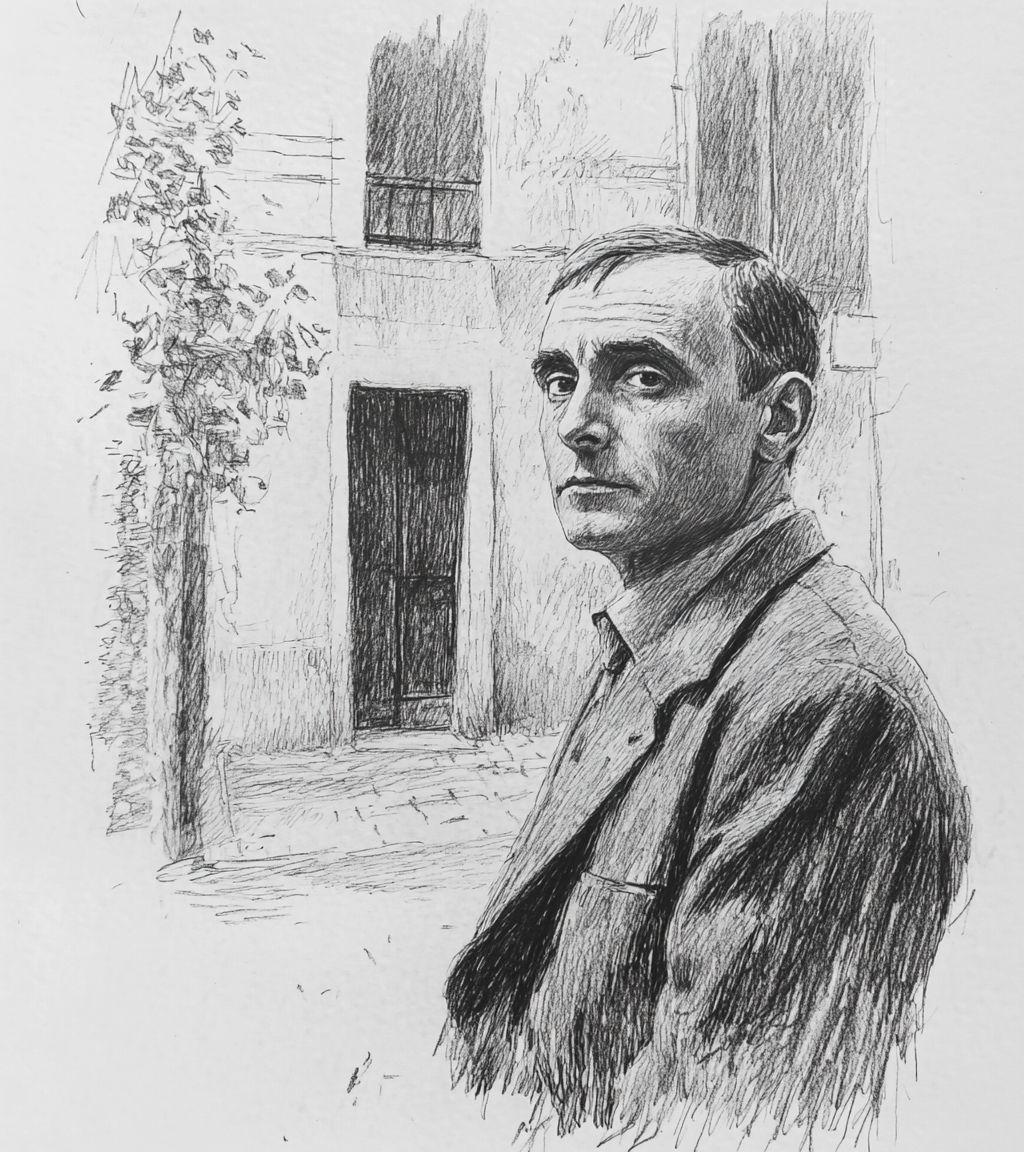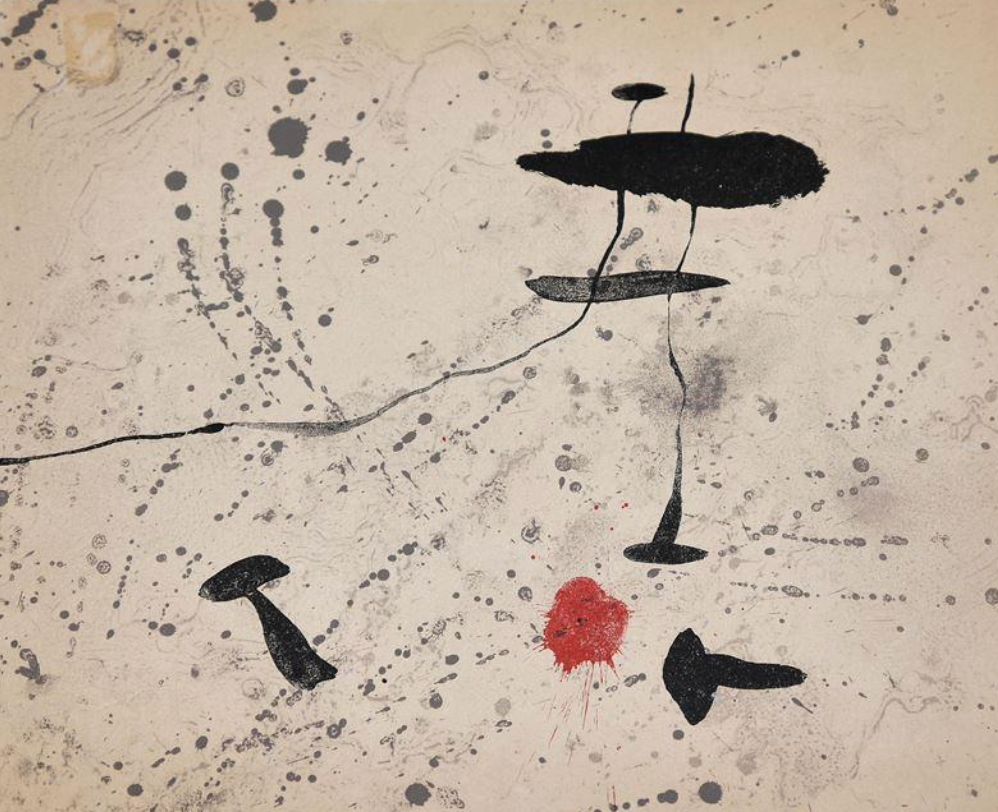
Joan Miro
Joan Miró studied at the La Lonja School of Fine Arts and later attended the Gali School of Art, where he was influenced by Catalan folk art, Romanesque church frescoes, and the color palette of post-impressionism. In 1920, he moved to Paris, where he connected with major figures of the avant-garde, including André Breton and Pablo Picasso. Although Miró maintained strong ties to his Catalan roots, his artistic development was shaped by his time in France. He lived between Paris and Spain for much of his life, and in later years established the Fundació Joan Miró in Barcelona, which opened in 1975.
Miró’s work is known for its playful, dreamlike quality, often blending abstraction with surrealist imagery. He used a visual language of floating shapes, stars, eyes, birds, and other organic forms rendered in bold colors and delicate lines. While he was associated with surrealism, he maintained a unique style that emphasized spontaneity, symbolic forms, and a rejection of traditional painting techniques. Over time, Miró expanded into other media, including sculpture, ceramics, and printmaking, experimenting with unconventional materials and surfaces while preserving his lyrical, childlike sensibility.
Some of Miró’s most iconic works include The Farm (1921–22), Harlequin’s Carnival (1924–25), Blue I, II, III (1961), and Woman and Bird (1982), the latter a monumental public sculpture in Barcelona. His work has been exhibited extensively around the world, including major retrospectives at the Museum of Modern Art (New York), Tate Modern (London), and the Centre Pompidou (Paris). The Fundació Joan Miró remains a major center for the study and exhibition of his work, showcasing hundreds of paintings, drawings, sculptures, and prints that span his long and prolific career.

